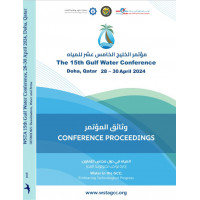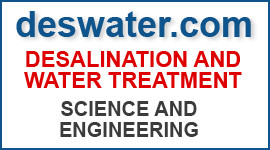Groundwater aquifers susceptibility index of waterborne diseases outbreaks(ASIWD) in Nile Delta, Egypt
Osama M. Sallam, Karim Soliman
http://doi.org/10.5004/700029
Groundwater aquifers susceptibility index of waterborne diseases outbreaks (ASIWD) in Nile Delta, Egypt
Osama M. Sallama, Karim Solimanb*
aResearch Institute for Groundwater, National Water Research Centre, Cairo, EgyptbWater Resources Research Institute, National Water Research Centre, Cairo, Egypt
https://doi.org/10.5004/700029
ABSTRACT
The Corona...




 Contents
Contents